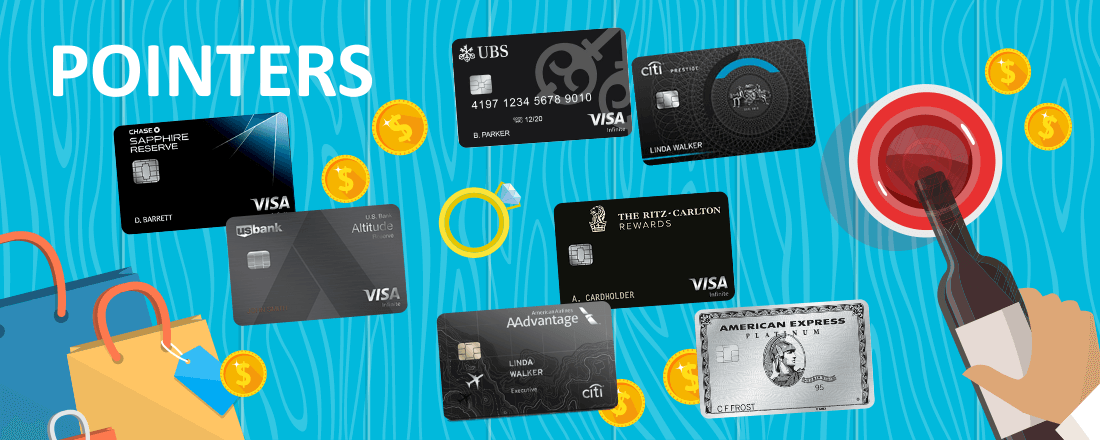
In the last year several banks have come out with new premium cards, and there are more to come. With an onslaught of ultra-expensive credit cards tempting us with
- Platinum from American Express
- Chase Sapphire Reserve
- Citi Prestige
- Chase Ritz Carlton
- U.S. Bank Altitude Reserve
- UBS Visa Infinite
- Citi AAdvantage Executive
What to Expect Once You Get Your Card
It is perfectly normal to apply for a premium credit card or even two of them in order to get the sign-up bonuses. In fact, when Chase Sapphire Reserve hit the market with a 100,000-point welcome bonus, it instantly became a media sensation. When people feel excited enough to post the snapshots of their new credit card on social media, you know you’ve got a winner.
However, once the bonus is yours and you’re not going to get it again, you might ask yourself if it’s worth paying another $450, $495 or even $550 annual fee to keep the card for another year. And it very well might be, but as a savvy consumer, you can’t pay thousands of dollars a year to maintain several premium cards with many overlapping benefits. It doesn’t make sense, which is why it’s important to decide what benefit or benefits are most important to you.
Most people consider more than one factor in order to decide whether to keep or dump their credit card. So, try to think about a few benefits or perks that you wouldn’t mind paying for and that you can’t find in cheaper cards. Here are a few examples of what you might consider:
Lounges
Winner: Platinum from American Express ($550 annual fee)
The Amex Platinum card grants unlimited access to you and your family (or up to two companions) to 1,000+ Priority Pass lounges, but there is more. You will also gain access to:
- The Centurion Lounge Network
- The International American Express Lounges
- Delta SkyClub (for Delta flights only)
- Airspace Lounges
No other credit card program gets you so much access to airport lounge clubs.
Runners-Up: Chase Sapphire Reserve and Chase Ritz-Carlton Rewards Credit Card ($450 annual fee)
Chase Sapphire Reserve and Chase Ritz Carlton only get you access to Priority Pass lounges, but unlike the American Express Platinum and most other cards, they don’t limit the number of companions you can bring with you. Having said that, we advise against inviting every nice person you’ve met in the terminal to have a few drinks on the house – every lounge in the network reserves the right to control the capacity.
Lounge access can be a terrific benefit, but take a look at your travel patterns. Do you travel a lot, and if so, do you travel mostly in economy? If you don’t travel often, access to airport lounges might not be worth paying hundreds of dollars a year. And if you mostly travel on business in premium classes, these tickets usually get you lounge access anyway.

Maximizing Earnings
Winner: Chase Sapphire Reserve
Chase Sapphire Reserve allows you to earn 3X points on travel and dining, and due to a liberal interpretation of travel it can be almost anything. Then you can redeem the Sapphire Reserve points for travel on the Ultimate Rewards website at 1.5X (for example, 40,000 points for a $600 plane ticket).
Runner-Up: U.S. Bank Altitude Reserve ($400 annual fee)
The U.S. Bank Altitude Reserve card has quite a unique earning feature. It offers 3X points for every $1 on travel and mobile wallet spending (i.e.
While 3X on mobile wallet spending can be potentially very lucrative, we believe that Chase Sapphire Reserve stacks up a little better for two reasons:
- 3X for dining
- You can book any kind of travel at 1.5X (not just airfare)
Cost
Winner: U.S. Bank Altitude Reserve
It’s not just that the card carries the lowest annual fee at $400; but it also has a very generous $325 annual travel credit. This is a real travel credit (covering all travel purchases, and not just accidental expenses), so you might end up paying just $75 a year for all the other benefits the card has to offer.

Medical Evacuation
Premium credit cards may have unique insurance protection benefits that can potentially save your trip or at least a lot of money. Or, sometimes it can save your life, which is the case with Medical Evacuation insurance. Most premium cards have this benefit, but not all of them are equal.
The term medical evacuation is often misunderstood. It doesn’t necessarily provide transportation to your home country. The way it’s usually worded in the credit cards’ terms and conditions is that you might be evacuated to the nearest medical facility that can provide you with adequate medical care. With that in mind, here are our rankings.
Winner: Platinum from American Express
This Amex Platinum’s benefit underwritten by IAG is called Emergency Medical Transportation Assistance, and it might be the best Medical Evacuation coverage from a card for the following reasons:
- No limit for coverage
- You don’t have to pay for the trip with the card
- No country or adventure sport exclusions
- Trips of up to 90 days are covered
- Your immediate family is covered too
While the Platinum’s Terms and Conditions don’t guarantee that you will be repatriated to a medical facility in or near your hometown, there are stories on the Internet that appear to confirm this as a probable outcome.
The Platinum’s coverage has one shortcoming, though. It doesn’t apply to pre-existing conditions, which are defined as any condition “being treated within the past 60 days.” If that describes you, you might be better off with another credit card.
Runner Up: Citi Prestige
Citi Prestige doesn’t exclude pre-existing conditions, but it has a few limitations of its own:
- $100,000 coverage limit
- Must pay for the trip with the card, at least partially
- Only trips of up to 60 days are covered
Retention Offers
Marketing departments have a lot of juice, but retention departments can also do things for you. If you want to keep one or more of your premium cards, call them and say you’re considering canceling the card. You will be transferred to the retention department, and while they will rarely waive the annual fee, they can still offer you something. They could throw in a partial statement credit, a few thousands miles or points, or some other perks or benefits that would help to soften the blow. Even if you don’t get the offer you like, all you have to lose is one phone call.





